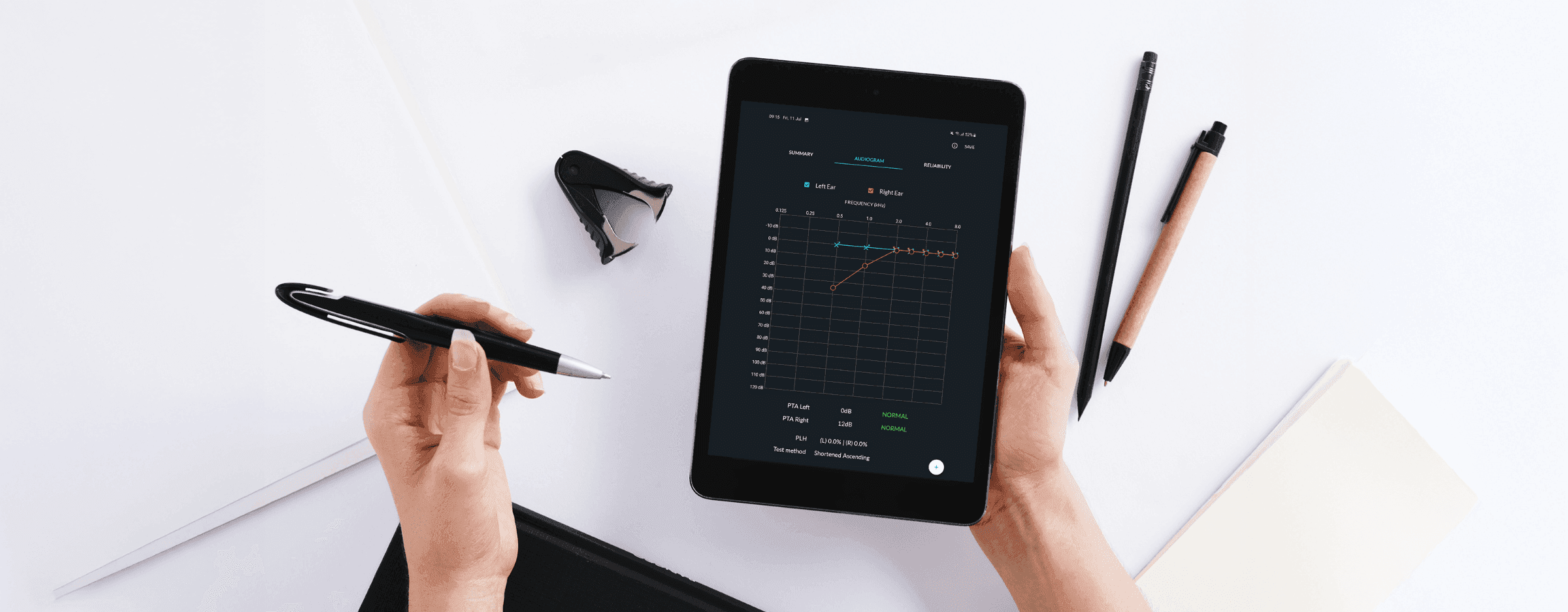
Scale Faster: Digital Audiometry for Modern Workflows
Search for articles by category
Booth-based testing is known as the gold standard in hearing testing. However, the space requirements and complex setup can often be a major constraint on clinical efficiency and service delivery.
Thanks to recent advancements in digital audiometry, the landscape is rapidly starting to shift.
To help hearing care providers and businesses navigate this transition, we’ll review the critical questions driving the adoption of boothless, digital audiometry across the healthcare ecosystem.
1. How reliable is a digital pure tone audiometer compared to traditional booth-based testing?
When evaluating the reliability of a digital pure tone audiometer, it is important to compare its performance against traditional audiometry.
A 2024 study, published in The Egyptian Journal of Otolaryngology, found that smartphone hearing tests demonstrated a strong positive correlation with screening PTA (Pure Tone Average) in hearing assessments. Importantly, there was no statistically significant difference between the two methods. This shows that smartphone-based audiometry can serve as a valuable testing option in low-resource settings.
A separate study, published in the Journal of the American Academy of Audiology, found that EHF smartphone testing with calibrated headphones can provide an accurate and reliable option for affordable mobile audiometry – especially useful in communities with limited access to hearing health care.
The hearTest digital audiometer has been featured in several international peer-reviewed journals and is calibrated to international standards like ISO, ANSI, and IEC.
This makes it a portable and accurate testing solution for many different settings.
2. How long does a hearing test take?
Thanks to several advancements in digital audiometry in recent years, researchers and manufacturers have significantly streamlined the testing process.
Automated testing protocols, which are a hallmark of modern devices, can reduce test time and minimize operator variability. This enables faster testing, which is key for large-scale assessment programs in occupational, school, and community settings.
A standard air conduction pure tone audiometry test takes approximately 15 minutes.
The hearTest device, however, enables testing between 10-15 minutes per patient diagnosis*.
*This is not an exhaustive list. Our benchmark test duration is specific to hearX audiometric equipment**.
3. How much does an audiometer typically cost?
This varies widely depending on the device type, features, and intended use.
Manual screening audiometers can cost between $800 to $4,500, and pricing for manual diagnostic audiometers can range from $1,045 to $4,500.
hearX has made it our mission to support accessible hearing care, which is why our pricing structure includes:
- Your software license,
- Hardware components, and
- Access to our cloud-based data management system.
Our pricing model offers flexible and scalable options. This makes professional hearing test equipment more affordable for many hearing health practitioners and businesses.
Conclusion
Boothless, digital audiometry should be a key consideration for hearing care professionals and businesses looking to scale hearing testing, cut costs, and improve operational efficiency. As a leader in clinically validated audiometric technology, hearX offers reliable, easy-to-use products you need to stay ahead in the hearing care landscape.
Ready to see the returns? Request a demo today. Contact our team to explore product kits tailored to your team's priorities and objectives.
Email us or call:
US: +1 (415) 825-3064 | RSA: +27 (0) 12 030-0268
**Disclaimer:
The test duration depends on factors such as user/tester proficiency and patient cooperation.
If you have any additional inquiries, please direct them to support@hearxgroup.com



